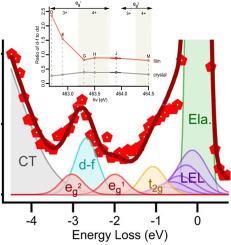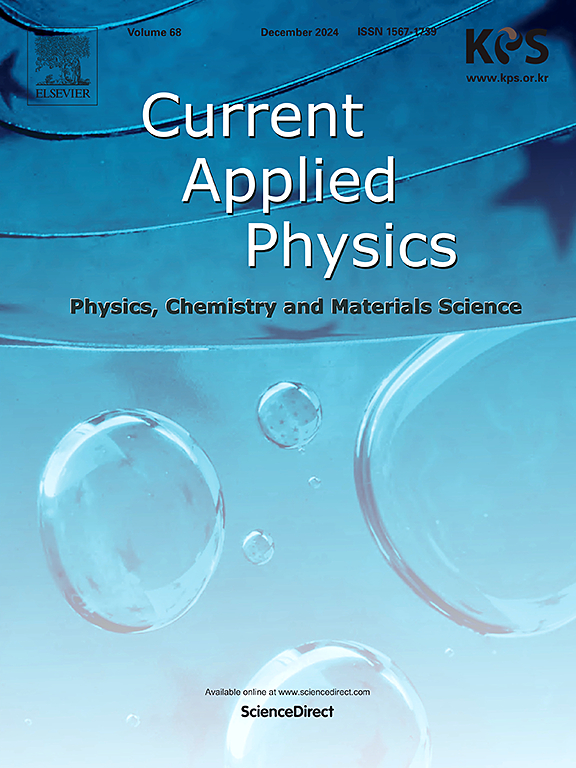Localized and delocalized electron states in TiO2 revealed using resonant inelastic soft X-ray scattering
IF 3.1
4区 物理与天体物理
Q3 MATERIALS SCIENCE, MULTIDISCIPLINARY
引用次数: 0
Abstract
Excess carriers in defective TiO2 play a key role in determining the functionality of numerous applications including photocatalysts, memristors, etc. The electronic structures of the excess electron states derived from inherent oxygen deficiencies in a TiO2 crystal and a TiO2 thin film are investigated by using resonant inelastic soft X-ray scattering. The results show that there exist two separable states associated with these excess electrons, that is, either local (bound) or delocalized (band-like) d electrons, and that their abundance differs significantly depending on the sample type. In the case of thin film, delocalized electron states (d-fluorescence) dominate over the localized defect states (dd excitation) showing a strong resonance effect at Ti3+’s excitation energy, whereas in the case of crystal, both localized and delocalized electron states weakly contribute to the defect states. Most plausibly, this discrepancy originates mainly from the distinct crystal structure of a rutile (crystal) and an anatase (thin film), implying that understanding the crystal structure dependence of intrinsic defects in TiO2 polymorphs is crucial for engineering TiO2's electronic transport properties.

用共振非弹性软x射线散射揭示了TiO2的局域和离域电子态
缺陷TiO2中多余的载流子在决定许多应用的功能方面起着关键作用,包括光催化剂、忆阻器等。采用共振非弹性软x射线散射研究了TiO2晶体和TiO2薄膜中由于固有氧缺乏而产生的多余电子态的电子结构。结果表明,这些多余电子存在两种可分离态,即局域(束缚态)或离域(类带态)d电子,它们的丰度随样品类型的不同而有显著差异。在薄膜中,离域电子态(d-荧光)主导了局域缺陷态(dd激发),在Ti3+激发能处表现出很强的共振效应,而在晶体中,局域电子态和离域电子态对缺陷态的贡献都很弱。最有可能的是,这种差异主要源于金红石(晶体)和锐钛矿(薄膜)的不同晶体结构,这意味着了解TiO2多晶态中固有缺陷的晶体结构依赖性对于设计TiO2的电子输运性质至关重要。
本文章由计算机程序翻译,如有差异,请以英文原文为准。
求助全文
约1分钟内获得全文
求助全文
来源期刊

Current Applied Physics
物理-材料科学:综合
CiteScore
4.80
自引率
0.00%
发文量
213
审稿时长
33 days
期刊介绍:
Current Applied Physics (Curr. Appl. Phys.) is a monthly published international journal covering all the fields of applied science investigating the physics of the advanced materials for future applications.
Other areas covered: Experimental and theoretical aspects of advanced materials and devices dealing with synthesis or structural chemistry, physical and electronic properties, photonics, engineering applications, and uniquely pertinent measurement or analytical techniques.
Current Applied Physics, published since 2001, covers physics, chemistry and materials science, including bio-materials, with their engineering aspects. It is a truly interdisciplinary journal opening a forum for scientists of all related fields, a unique point of the journal discriminating it from other worldwide and/or Pacific Rim applied physics journals.
Regular research papers, letters and review articles with contents meeting the scope of the journal will be considered for publication after peer review.
The Journal is owned by the Korean Physical Society.
 求助内容:
求助内容: 应助结果提醒方式:
应助结果提醒方式:


